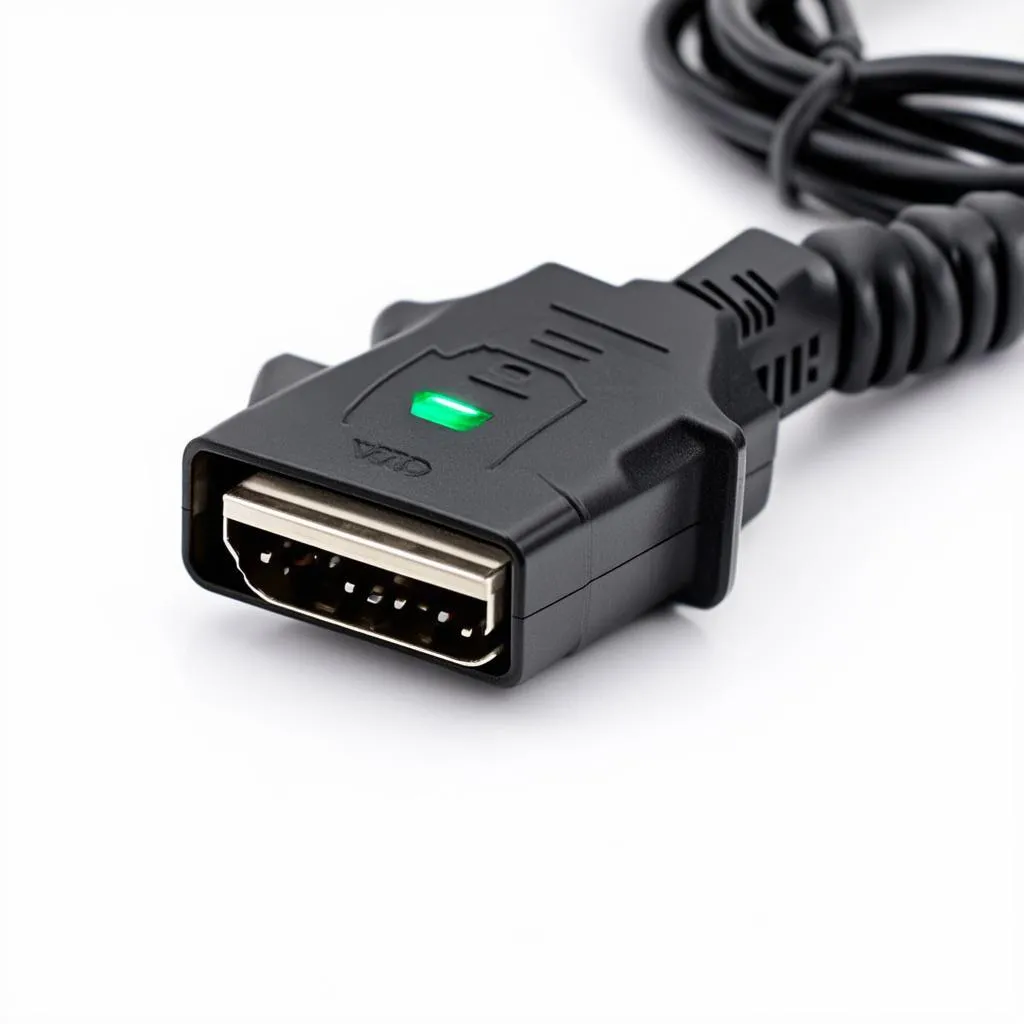The mass air flow (MAF) sensor is a critical component in your car’s engine management system. It measures the amount of air entering the engine, allowing the ECU to calculate the correct fuel mixture for optimal performance and efficiency. A faulty MAF sensor can lead to a range of issues, and VCDS (Vag-Com Diagnostic System) is a powerful tool to diagnose and troubleshoot these problems. Let’s dive into how VCDS helps pinpoint MAF sensor issues and explore solutions to get your car running smoothly again.
After using VCDS for some time, you’ll likely find yourself wanting to reset learned values. Check out our guide on vcds reset learned values for a comprehensive walkthrough.
Understanding the Role of the MAF Sensor and VCDS
The MAF sensor acts as the engine’s “lungs,” telling the ECU how much air it’s breathing. This information is crucial for determining the correct fuel-to-air ratio. A malfunctioning MAF sensor can send incorrect data to the ECU, resulting in poor fuel economy, rough idling, hesitation, and even stalling. VCDS allows you to access the live data stream from the MAF sensor, compare it against expected values, and identify potential problems.
Common Symptoms of a Faulty MAF Sensor
Several symptoms can indicate a failing MAF sensor. These include:
- Reduced fuel economy: A bad MAF sensor can cause the engine to run rich, wasting fuel.
- Rough idle: Incorrect air readings can disrupt the engine’s idle speed, causing it to fluctuate or stall.
- Hesitation or stumbling on acceleration: The engine may hesitate or stumble when you press the accelerator pedal.
- Check engine light: The check engine light may illuminate, and VCDS can help you read the specific fault codes.
- Black smoke from the exhaust: This can indicate a rich fuel mixture, often caused by a faulty MAF sensor.
If you’re interested in monitoring your fuel consumption, you might find our guide on how to do mpg with vcds useful.
Diagnosing MAF Sensor Problems with VCDS
VCDS empowers you to diagnose MAF sensor issues accurately. Here’s how:
- Connect VCDS to your car’s OBD-II port.
- Select the appropriate control module (usually Engine).
- Go to Measuring Blocks or Live Data.
- Locate the MAF sensor reading (usually labeled as “MAF” or “Air Mass”).
- Observe the values at idle and during acceleration. Compare these readings with the manufacturer’s specifications.
Interpreting VCDS MAF Sensor Data
Analyzing the VCDS data is key to diagnosing the MAF sensor. Low readings at idle or during acceleration can indicate a faulty sensor. Inconsistent or fluctuating readings also point to a potential problem.
“A common misconception is that a check engine light always means a catastrophic failure. Often, it’s a simple sensor issue like a bad MAF, easily diagnosed with VCDS,” says John Miller, Automotive Diagnostics Specialist at CarDiagTech.
Solutions for MAF Sensor Issues
Once you’ve confirmed a faulty MAF sensor using VCDS, you have several options:
- Cleaning the MAF sensor: Sometimes, a dirty MAF sensor can be cleaned with specialized MAF sensor cleaner.
- Replacing the MAF sensor: If cleaning doesn’t resolve the issue, replacing the MAF sensor is usually the best course of action. Ensure you use a high-quality replacement part.
If you own a 2001 Jetta TDI, our article on what is vcds code reader for 2001 jetta tdi provides specific information relevant to your vehicle.
Preventing Future MAF Sensor Problems
Regular maintenance can help prevent future MAF sensor issues:
- Regularly inspect and clean the air filter. A dirty air filter can restrict airflow and contaminate the MAF sensor.
- Avoid using oily air filters, as the oil can coat the MAF sensor and affect its readings.
- Consider using a pre-filter to protect the MAF sensor from debris and contaminants.
Are you concerned about your turbocharger’s performance? Learn how to diagnose turbo issues with VCDS in our guide on how to check turbo with vcds.
Conclusion
VCDS is an invaluable tool for diagnosing and resolving MAF sensor problems. By understanding how to interpret the data provided by VCDS, you can quickly identify and fix issues, improving your car’s performance, fuel economy, and overall drivability. Regular maintenance and proper diagnosis with VCDS will keep your engine running smoothly and efficiently. Don’t let a faulty MAF sensor hinder your driving experience; take control with VCDS.
FAQs
- What is a MAF sensor? A MAF sensor measures the air entering the engine, informing the ECU for proper fuel mixture.
- How do I know if my MAF sensor is bad? Symptoms include reduced fuel economy, rough idle, hesitation, and the check engine light.
- Can I clean my MAF sensor? Yes, using a specialized MAF sensor cleaner can sometimes resolve the issue.
- How do I replace a MAF sensor? Consult your vehicle’s repair manual or seek professional assistance.
- Why is VCDS helpful for diagnosing MAF sensor problems? VCDS provides access to live data, allowing accurate diagnosis.
- Can a bad MAF sensor damage my engine? While not directly damaging, it can lead to other problems if left unaddressed.
- How can I prevent MAF sensor problems? Regular air filter maintenance and using quality replacement parts are key.
Boost leaks can be tricky to pinpoint. Learn more about how VCDS can help detect them in our article can vcds see boost leaks.
Need further assistance? Contact us via WhatsApp: +1 (641) 206-8880, Email: [email protected] or visit us at 276 Reock St, City of Orange, NJ 07050, United States. We offer 24/7 customer support. Explore other articles on our website for more helpful tips and guides. We also have articles on various other topics related to car diagnostics and VCDS.



